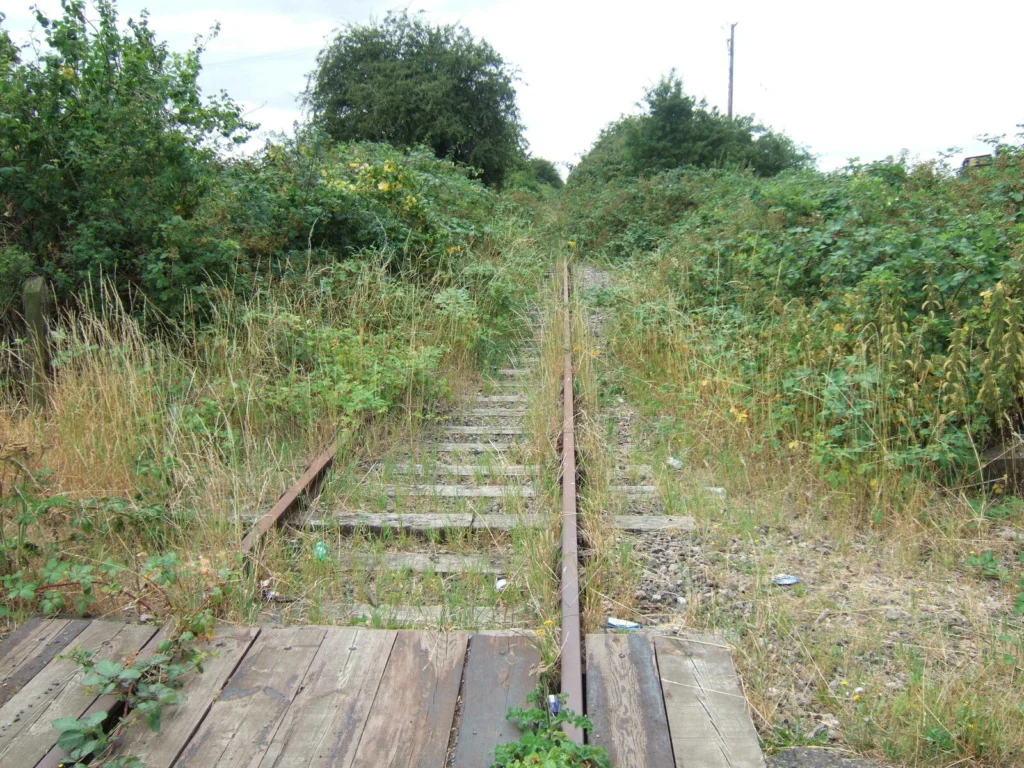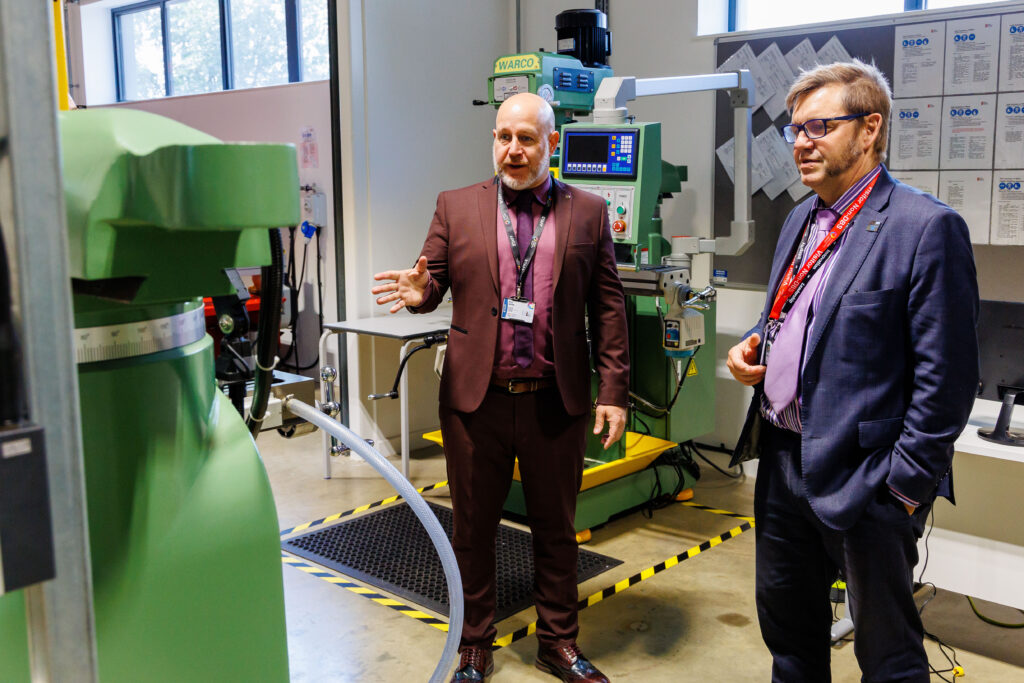Four options for a rail connection between Wisbech and March will be considered next month – with costs ranging from up to £230m for restoration of heavy rail to up to £180m for tram/light rail variants.
The figures will be presented to the Cambridgeshire and Peterborough Combined Authority and are contained in a £310,000, 97 page options appraisal prepared on their behalf by Network Rail.
Finding the sort of money required to contemplate any of the options will be challenging.
Matthew Lutz, transport programme manager for the Combined Authority, says the Benefit Cost Ratio (BCR) figure “falls well below the threshold typically required to justify investment in transport infrastructure, where schemes with a BCR of 1.5 or higher are generally considered more viable”.
BCR is accepted as the public sector litmus test whereby net benefits are divided by net costs and traditionally a BCR greater than two is required.

“In light of the BCR analysis for the proposed scheme, it is evident that the project has a very low BCR of between 0.10 and 0.27, dependant on the preferred option,” says Mr Lutz.
“This figure falls well below the threshold typically required to justify investment in transport infrastructure, where schemes with a BCR of 1.5 or higher are generally considered more viable.”
Putting this into context, he says, other rail projects, such as the Northern Powerhouse Rail scheme has a BCR of around 1.3, “reflecting a much stronger economic case for funding.
Could @WisbechRail be incorporated into a new network? https://t.co/Pzuyvmqv1j
— Antony Carpen (@ACarpenDigital) October 27, 2024
“Similarly, the Thameslink Programme, which had a BCR of approximately 2.0, demonstrates the level of economic return expected for rail infrastructure projects of this scale.

“Given this significant disparity, it is clear that the current proposal is unlikely to be supported through standard funding channels”.
FIGURES TO RE-OPEN WISBECH RAIL DON’T ADD UP
Mr Lutz adds: “Therefore, we must be realistic about the position and reconsider the approach, whether by exploring alternative funding sources, revisiting the scope of the scheme, or redirecting efforts towards projects with stronger economic justifications.
“Any further investment in this scheme without a clear path to improving its BCR would be challenging to defend in the face of competing priorities for rail infrastructure funding.”
His summary, however, omits to reflect the politics of the issue with Labour Mayor Dr Nik Johnson, and facing Mayoralty elections next year, unlikely to be the one to pull the plug completely on the project.
If he were to do so Conservative opponents would likely resurrect rail as an election issue even though many believe we are no further forward, in real terms, than when MP Steve Barclay met with Cabinet Minister Greg Clark in 2014 to discuss government funding for a study to see how Network Rail could deliver the project.

And we have come way, in a downward trajectory, since 2014 when consultants Mott McDonald completed a wider cost benefits study showing a benefit/cost ratio of 3.0 for Wisbech reopening, overturning a previous study by Atkin
The original report commissioned by Cambridgeshire County Council from Atkins only considered travel between Wisbech and March, which did not generate sufficient benefit to make reopening viable.
The county council widened the scope of the study to include for example travel between Wisbech and Cambridge, and between Wisbech and Downham Market.
HOW MUCH MORE TO BE SPENT ON RAIL PROSPECTS?
Funding to date for the recent study has been allocated from the Department for Transport’s (DfT) Transforming Cities Fund (TCF), with an estimated £1.9 million to be utilised by the end of the 2024/25 financial year.

“There is a further £5 million earmarked over the next two financial years, subject to approval in the Medium-Term Financial Plan (MTFP), for continued development work,” says Mr Lutz.
“However, given the current BCR of 0.27 and the relatively weak strategic case, it is unlikely that this project will successfully pass through the Single Assurance Framework, which prioritises schemes with a strong economic and strategic rationale.
“With such a low economic return, even with additional funding, the project is unlikely to justify further financial support.
“Therefore, it is essential that we take an approach focussed on the connectivity outcome, recognising the challenges ahead and considering the appropriate avenues for delivering those intended outcomes.”
The report will be considered by the Combined Authority transport and infrastructure on November 4.
The options report says: “Consideration should be given to the development proposed by Medworth CHP Limited for an Energy from Waste (EfW) Combined Heat and Power (CHP) facility to ensure any areas of conflict are understood and possible solutions identified.”
REPORT BRINGS IN £450M INCINERATOR CONSIDERATION
Medworth CHP Limited are to build a EfW CHP facility generating electricity and steam on land at Algores Way.
This includes a direct connection to the Nestlé Purina factory via an overground pipe along the disused March-Wisbech railway line and the Lamb Weston factory to the south of Weasenham Lane by way of a pipeline bridge over the March-Wisbech railway line.
“There is the potential for conflict between this steam pipe and the proposal to reintroduce a rail passenger service from March to Wisbech,” says the report.
So, what are the four options in the mix?
1: Provision of a heavy (conventional) rail transport link.
This provides a conventional heavy rail solution between March and Wisbech station. A fixed connection to the mainline at March provides access to existing heavy rail depot facilities and rail maintenance vehicle access.

2: Provision of a tram-train (hybrid heavy/light rail) transport system, including sub options for connectivity with existing local systems.
This provides a Tram Train solution between March and Wisbech station. There is an option for a fixed connection to the mainline at March for access for rail maintenance vehicles.
3: Provision of a tram (light rail) transport system
This provides a light rail solution between March and Wisbech station. There is no passenger service connection to the mainline railway. There is space north of March station for the provision of a depot and other support facilities.
4: Provision of a very light rail (VLR) transport system.
This provides a very light rail solution between March and Wisbech station. There is no passenger service connection to the mainline railway. There is space north of March station for the provision of a depot and other support facilities.
WHERE COULD NEW STATION FOR WISBECH BE BUILT?
The report says all options will provide a rail shuttle service for passengers between March and Wisbech based on two trains per hour in each direction supported by a single track with a passing loop (double track) midway along the line with onward connectivity to mainline services via an interchange at March.
The location of the station in Wisbech will be the terminus for all options is at a site adjacent to the end of Oldfield Lane.
For two of the options, tram/train, and tram there is potential for an on-street tramway to Horsefair bus station, says the report.
Mr Lutz will tell the transport committee that on October 1 officers from the Combined Authority and Network Rail presented the key findings to members of Fenland District Council.
“This engagement ensured that locally elected members had the opportunity to review the findings and provide considered feedback,” he says.
FENLAND COUNCILLORS BRIEFED ON WISBECH RAIL
Mr Lutz sets out a summary of the key points raised by FDC members
1: Preference for Train-Tram and Conventional Rail Solutions: The majority of members expressed a preference for train-tram and train options, with several noting that while the BCR is an important consideration, it should not be viewed as the sole determining factor.

Additionally, some members raised concerns over the financial inefficiency of the train option, advocating for the train-tram alternative to be prioritised.
2: Service Extension Proposals: Members suggested that the service should be extended to Ely and Cambridge, with strong opposition to a shuttle service as a viable option.
There was also some discussion around the potential for further extending the service to King’s Lynn.
3: It was recommended that the station be situated in the centre of Wisbech, despite the additional costs this would incur over
FACT FILE
The railway from March to Wisbech was originally opened in 1847 under the Eastern Counties Railway, later becoming part of the Great Eastern Railway in 1862.
Constructed as a double-track railway, it was designed primarily to serve the Port of Wisbech, with the line eventually extending to Watlington Junction, linking it to the Ely to King’s Lynn route.
Officially known as the Wisbech Goods Branch (Engineer’s Line Reference WIG), the line runs from March East Junction to its nominal terminus at Wisbech.
Passenger services on this line were discontinued in 1968, and significant portions of the track, particularly beyond Weasenham Lane level crossing, have since been removed.
However, the remaining section of the rail corridor is still under the ownership of Network Rail.
Network Rail fights compulsory land buy-up to keep Wisbech rail hope alive
Originally built as a twin-track railway, the line was reduced to a single track in 1972.
From that point until 2000, it was used exclusively for freight, serving key industrial sites such as Metal Box and Purina, located south of Wisbech.
The section closer to March continues to be operational, primarily supporting shunting activities and providing access to Whitemoor Yard via the chord line from March West Junction.
RAILFUTURE EXPLORES OPTIONS FOR WISBECH
You can see some of the background to the Wisbech-March rail campaign here courtesy of RailFuture



























